Ever walked into a room and instantly felt calmer; like something just clicked? Chances are, that space used biophilic design, and it wasn’t a coincidence. It was probably the wood accents, the sunlight spilling through the window, or the soft touch of linen that made you feel grounded, safe, and, well… human.
Biophilia in design is more than a buzzword. It’s a movement that’s reshaping interiors by focusing on our innate connection to nature. But here’s the thing: you don’t need a rainforest in your living room to tap into its benefits. The secret? Materials.
Let’s dive into the most used materials in biophilic decoration, how they boost your well-being, and how you can use them to bring the outside in, without making your home look like a jungle.
What are the most used materials for biophilic decoration?
Before we start listing all the beautiful stuff, let’s get one thing straight: biophilic design isn’t about decoration. It’s about experience.
The textures, colors, patterns, and even feel of materials have a huge impact on our mood. When those materials are natural, sustainable, and organic, they don’t just look good, they feel right. They remind us of places we instinctively love: forests, riversides, sun-drenched fields.
So when we say “biophilic materials,” we mean more than trendy decor. We mean the stuff that helps us breathe easier, sleep deeper, and live more mindfully.
Glass: transparency that connects indoors and outdoors
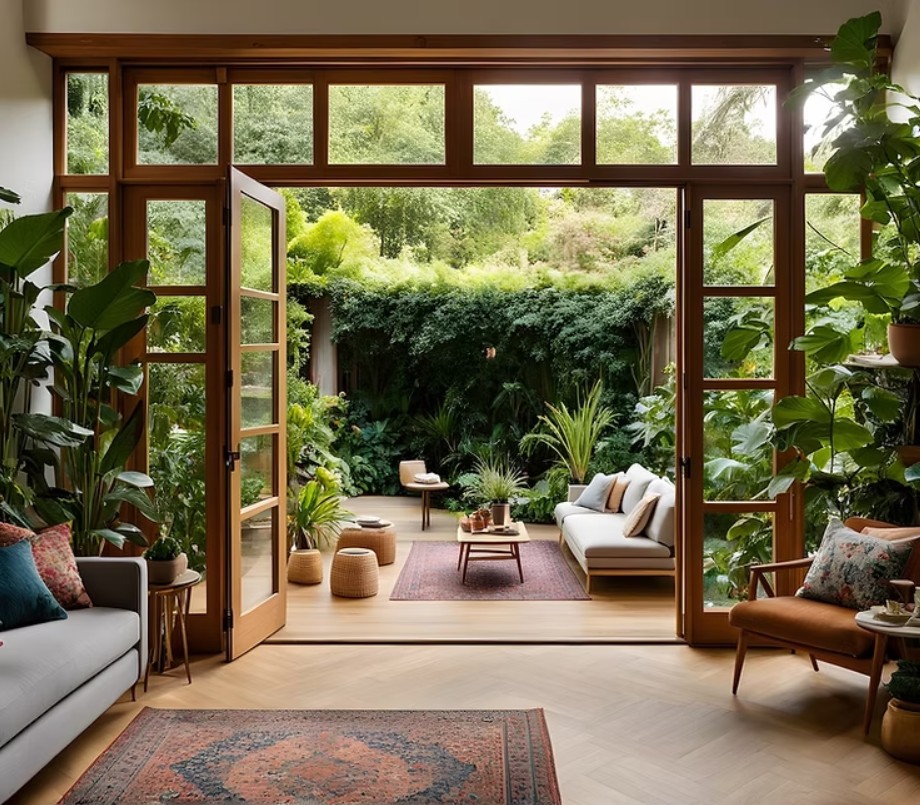
When it comes to enhancing natural light and creating an open, airy feel, glass plays a vital role in biophilic design. It serves as a bridge between the indoors and the natural world outside, allowing sunlight to stream in and providing uninterrupted views of greenery, gardens, or skies. Glass windows, doors, walls, and decor help dissolve the barrier between home and nature, fostering a sense of continuity and connection.
Large floor-to-ceiling windows, glass partitions, and skylights are especially effective. They amplify daylight, reduce the need for artificial lighting, and improve mental well-being. Natural light regulates our circadian rhythms, boosts mood, and enhances productivity. A room bathed in sunlight instantly feels more alive, which is precisely what biophilic interiors strive for.
Beyond windows, glass can also be used in design details. Think of glass vases, terrariums, or shelves that hold trailing plants. Frosted or textured glass options offer privacy without sacrificing brightness. Recycled glass tiles or decor bring an eco-friendly edge, reducing waste while contributing to a luminous aesthetic.
By reflecting light and offering visual access to outdoor scenes, glass transforms the atmosphere of any room, reinforcing the essential principles of openness and transparency that biophilic decoration values.
Living materials: moss walls and vertical gardens
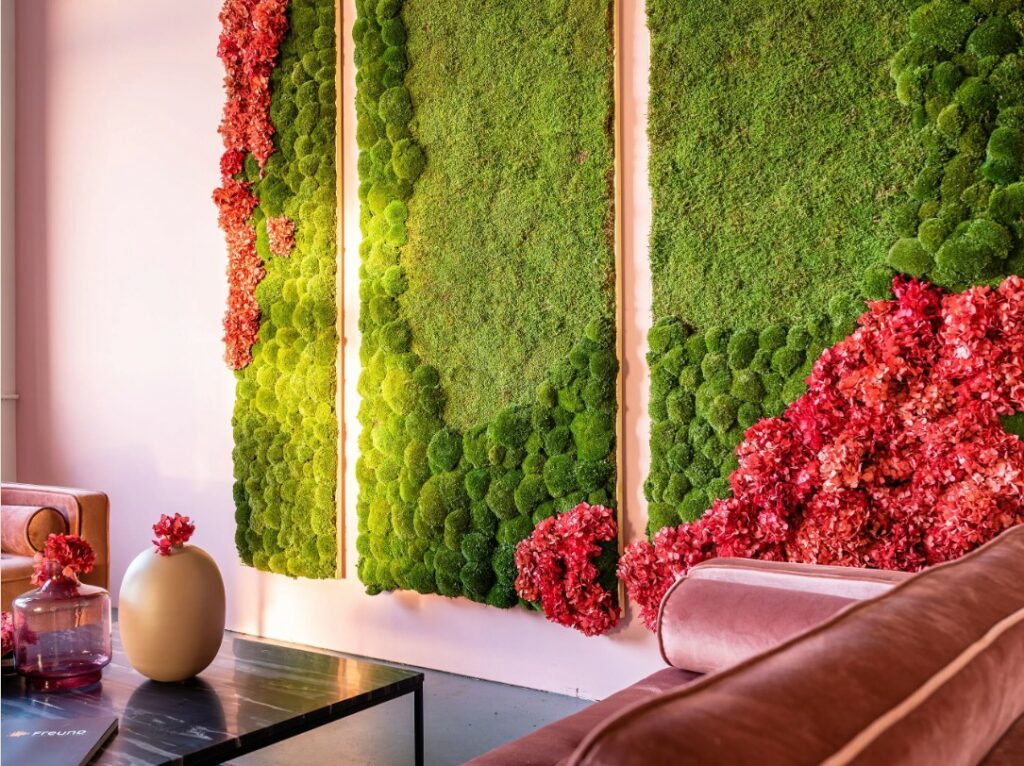
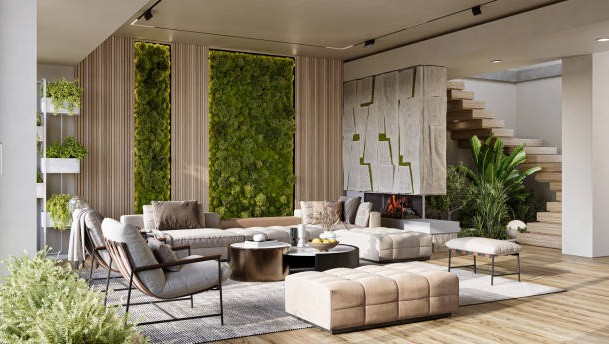
One of the most exciting innovations in biophilic interiors is the use of living materials like moss walls and vertical gardens. These living systems are the epitome of bringing nature indoors; not just through simulation, but literally.
Moss walls are self-sustaining and require minimal maintenance. They purify the air, absorb sound, and provide a rich visual texture that’s hard to replicate with synthetic materials. Whether used in a single statement wall or as part of a larger green installation, they become a living piece of art; dynamic, fresh, and soothing.
Vertical gardens, also known as green walls, consist of a variety of plants arranged on mounted panels. These systems can thrive indoors with the help of hydroponics or irrigation systems. Aside from their obvious visual impact, they contribute to cleaner air and a more humid indoor climate, which is beneficial in drier environments.
Incorporating living elements into your decor creates a truly immersive biophilic experience. These installations can be customized with ferns, succulents, herbs, or flowering plants to match your climate and aesthetic. They are an ideal blend of art, nature, and function; exemplifying what biophilic design is all about.
Technically, plants aren’t “materials,” but in biophilic design, they’re mandatory. They don’t just sit pretty; they:
- Purify the air
- Reduce stress and anxiety
- Boost productivity
From green walls to potted herbs in the kitchen, incorporating greenery is a direct path to wellness. Plus, plants work beautifully with all the other materials we’ve mentioned.
Start small with easy-care plants like:
- Snake plants
- ZZ plants
- Pothos
- Peace lilies
Wood: the warmth of the wild
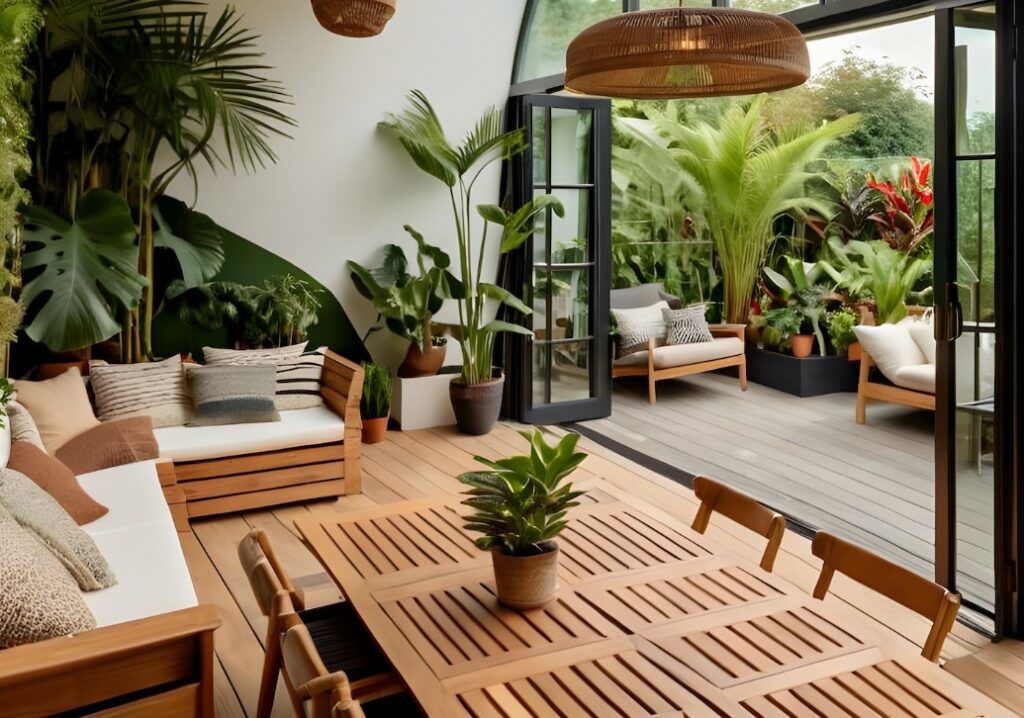
Let’s start with the classic. If biophilic design had a mascot, it’d be wood.
Whether it’s rustic beams, a polished oak table, or a driftwood sculpture, wood adds:
- Warmth
- Texture
- Timeless beauty
But it’s not just aesthetic. Wood literally lowers our stress response. In one study, rooms with visible wood surfaces created lower blood pressure and heart rates in occupants.
Bonus: Opt for sustainably sourced wood (look for FSC certification), and you’re supporting forest conservation while elevating your space.
Bamboo: light, strong, and seriously sustainable
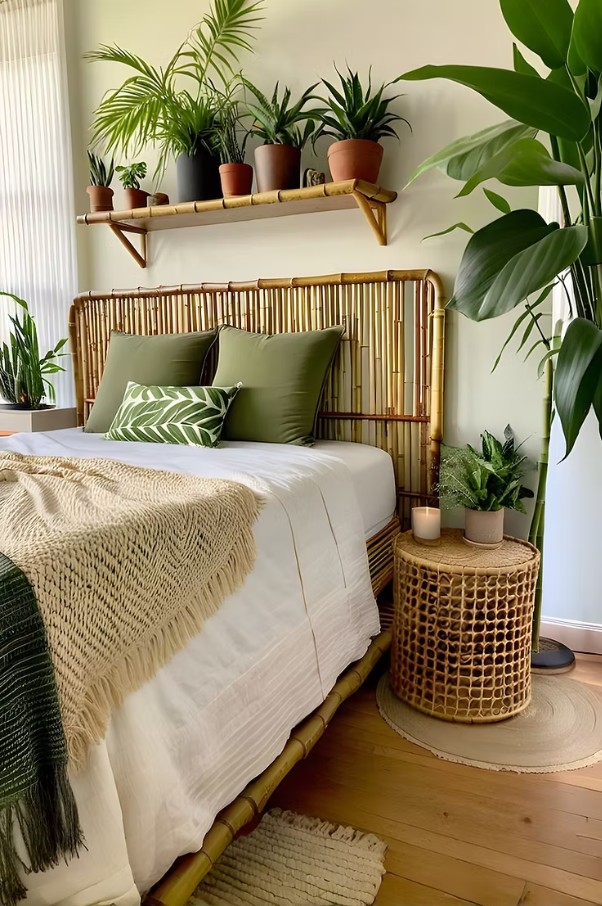
If wood is the classic, bamboo is the cool, eco-conscious cousin.
- It grows like crazy (some species grow up to 3 feet a day)
- It regenerates without needing replanting
- It uses less water and fewer pesticides than other crops
Design-wise, bamboo is sleek and versatile. Think bamboo flooring, blinds, furniture—even toothbrushes. It’s one of the most sustainable materials out there, and in biophilic decoration, it’s trending for a reason.
Natural stone and ceramics: the soul of the earth
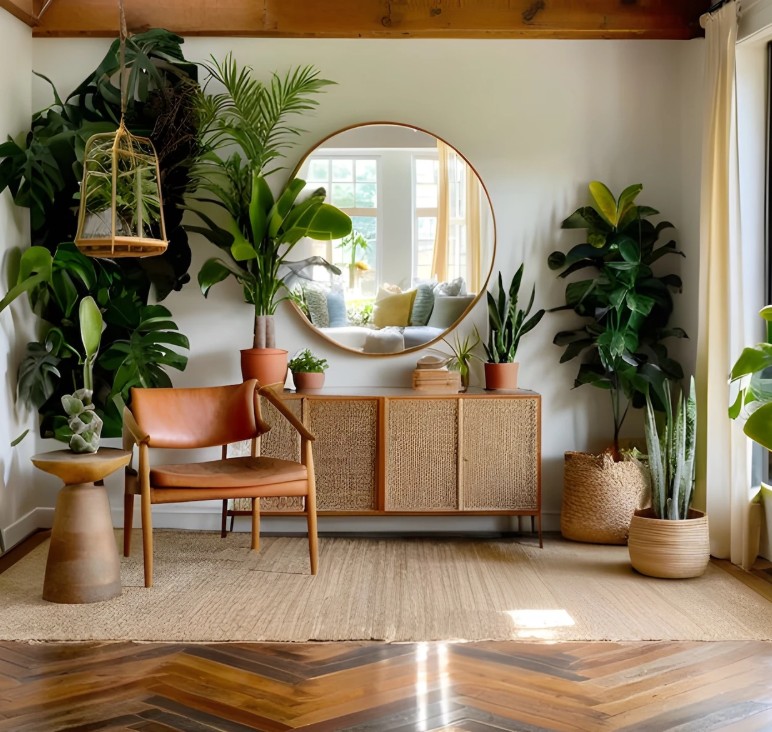
There’s something primal about stone. Maybe it’s the texture. Maybe it’s the ancientness of it. But natural stone and ceramics give interiors a solid, grounded energy.
Ceramics, especially hand-crafted ones, offer:
- Unique organic shapes
- Natural imperfections (which we love)
- Earthy tones
Use them in:
- Flooring
- Countertops
- Backsplashes
- Decorative pots and vases
Bonus: ceramic tiles can mimic the look of natural rock or sand, creating visual ties to landscapes—without the maintenance.
Textiles: hemp, organic cotton, and the touch of nature
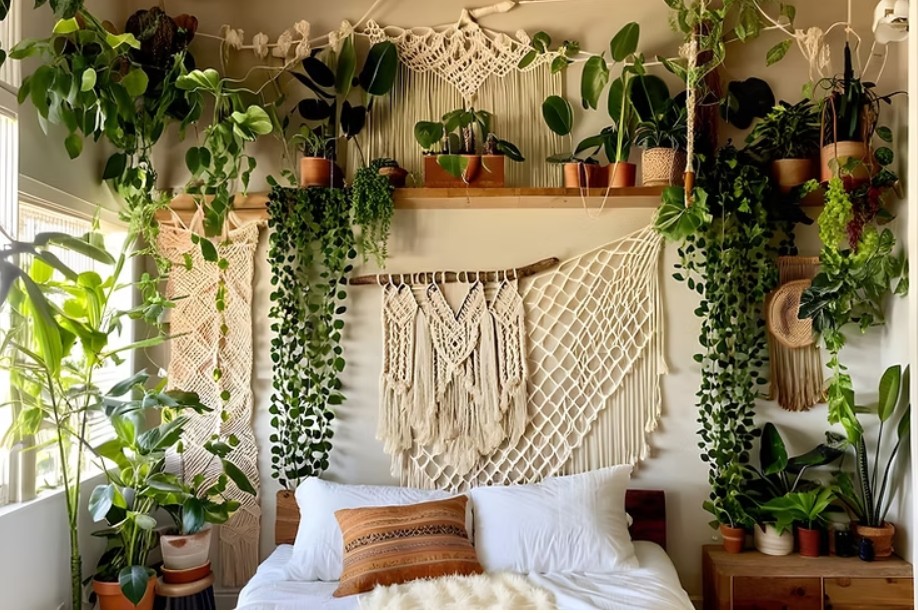
When it comes to comfort, biophilic decoration doesn’t skimp. And the textiles used in biophilic design go way beyond just “looking natural.”
Here are some fan favorites:
Hemp
- Super durable
- Grows fast and needs little water
- Perfect for upholstery, curtains, and rugs
Organic Cotton
- Soft, breathable, cozy
- Used in bedding, throws, and cushion covers
- No pesticides = better for you and the planet
Tip: Stick to natural dyes and avoid synthetic finishes to keep the experience pure and toxin-free.
Plant-based composites: innovation meets sustainability
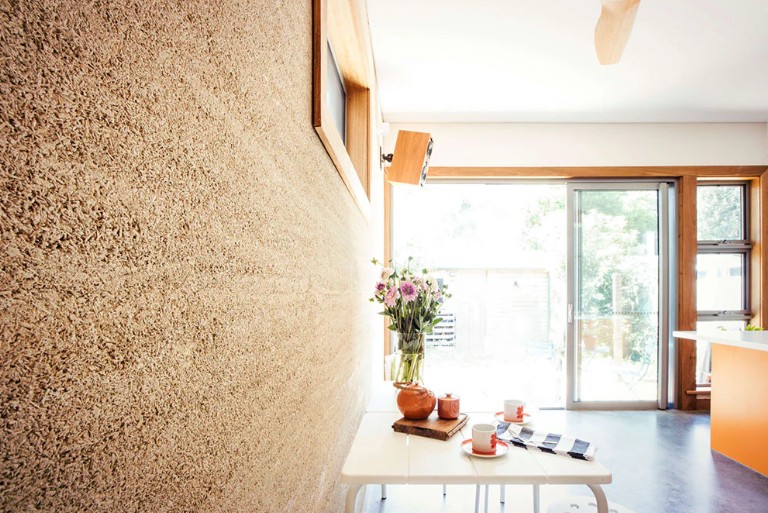
As material science advances, plant-based composites are becoming a favorite among eco-conscious designers. These innovative materials are created by combining natural fibers like hemp, flax, coconut husks, or recycled agricultural waste with bio-resins or other eco-binders.
The result? A new generation of materials that are lightweight, biodegradable, durable, and perfect for modern interiors. Items like coconut composite furniture, hempcrete wall panels, or corn-based countertops bring cutting-edge green technology into the realm of everyday living. They maintain the look and feel of raw, organic materials while offering enhanced performance and sustainability.
What’s fascinating is how seamlessly these composites blend into biophilic spaces. A dining table made from pressed palm fibers looks no less natural than one made of hardwood. The difference lies in the eco-impact, these composites often make use of what would otherwise be waste, reducing strain on forests and natural resources.
For those looking to innovate without compromising aesthetics, plant-based composites are the future of biophilic decoration. They demonstrate that sustainability doesn’t mean sacrificing style; it means evolving it.
Smart sustainable materials: where nature meets technology
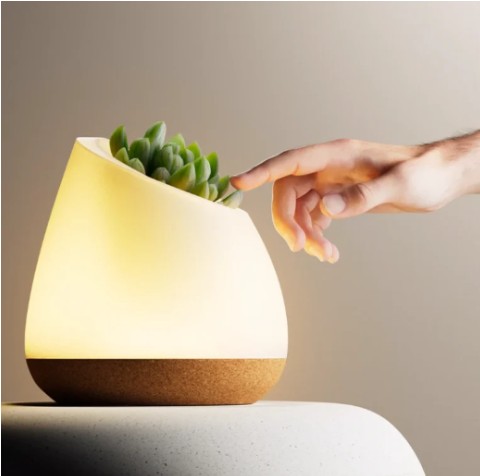
As biophilic design moves into the future, it embraces not just traditional natural materials, but also smart, sustainable innovations. These materials merge natural inspiration with technological advances to offer enhanced environmental and experiential benefits.
Take Bioo Lux, for example, a remarkable fusion of plant life and interactive tech. This product uses your touch on a plant to activate lighting, transforming the plant into a biological switch. It’s not just visually striking, but also a conversation starter that embodies the synergy of technology and nature.
Other smart materials in this space include thermochromic tiles that change color with temperature, solar-powered lighting systems, and adaptive smart glass that adjusts transparency based on sunlight. These innovations help regulate your interior environment; light, air, and temperature, while remaining energy-efficient.
Incorporating smart, sustainable materials doesn’t detract from biophilic authenticity, it enhances it. The future of biophilic interiors lies in creating homes that are as smart as they are soulful, where technology works quietly behind the scenes to support a healthier, more connected lifestyle.
Crafting a nature-centric home with purpose
Biophilic decoration isn’t just about placing plants in your home, it’s a holistic approach to designing with nature at its core. It means selecting materials that honor the earth, that tell stories of growth, decay, and renewal. From the warmth of reclaimed wood to the innovation of living walls and plant-based composites, every material you choose reflects your commitment to living in harmony with the natural world.
These materials don’t just look beautiful, they serve a purpose. They clean the air, improve your mood, regulate temperature, and connect you to something primal and essential. Biophilic design reminds us that nature isn’t something outside to admire from a distance, it’s something we can live within, every day.
So whether you’re renovating an entire home or just adding natural touches, let the materials you choose be your guide. Feel the texture, notice the grain, appreciate the imperfection. That’s where the beauty lies.
What are the top materials used in biophilic decoration?
Wood, bamboo, hemp, organic cotton, stone, terracotta, ceramics, rattan, clay, and reclaimed materials are the most common. These choices prioritize sustainability and natural aesthetics.
Why is wood considered essential in biophilic design?
Wood adds warmth, texture, and organic charm. When sourced sustainably, it supports eco-conscious living while connecting interior spaces with nature.
How can I maintain natural materials like stone or bamboo?
Use eco-friendly sealants for stone, and avoid harsh chemicals. Bamboo should be kept dry and treated periodically to prevent warping or mold.
Are smart materials suitable for biophilic spaces?
Yes, if they enhance sustainability and comfort. Innovations like smart glass and biological switches like Bioo Lux integrate seamlessly with biophilic themes.
Can recycled materials be stylish in interior design?
Absolutely. Reclaimed wood, recycled glass, and upcycled decor not only reduce waste but add character, authenticity, and narrative depth to any space.
Bring nature home. One material at a time. Join the biophilic design movement, and let the earth be part of your day.



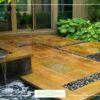



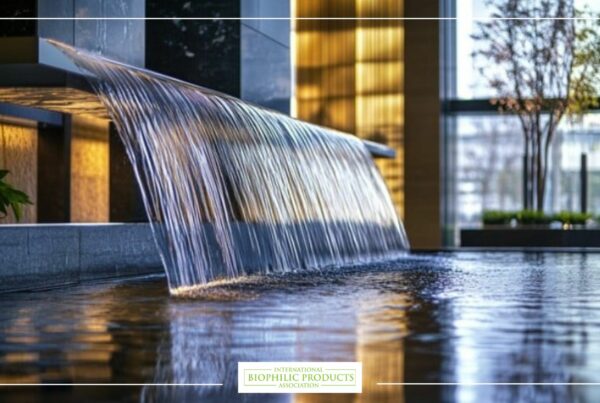
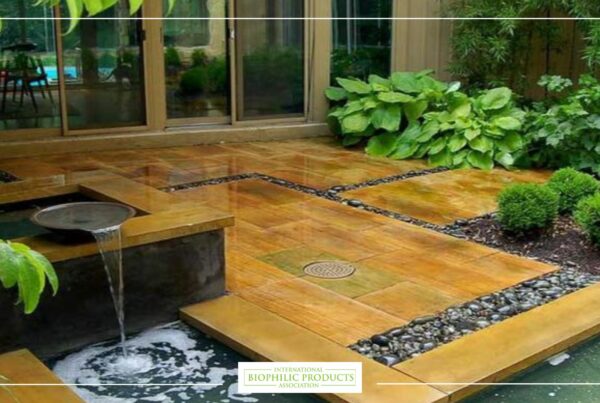
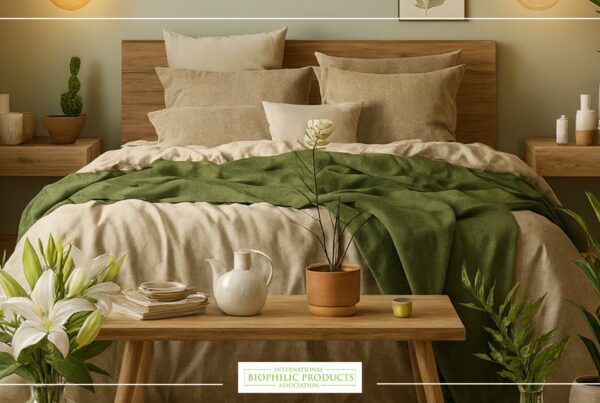

13 Comments